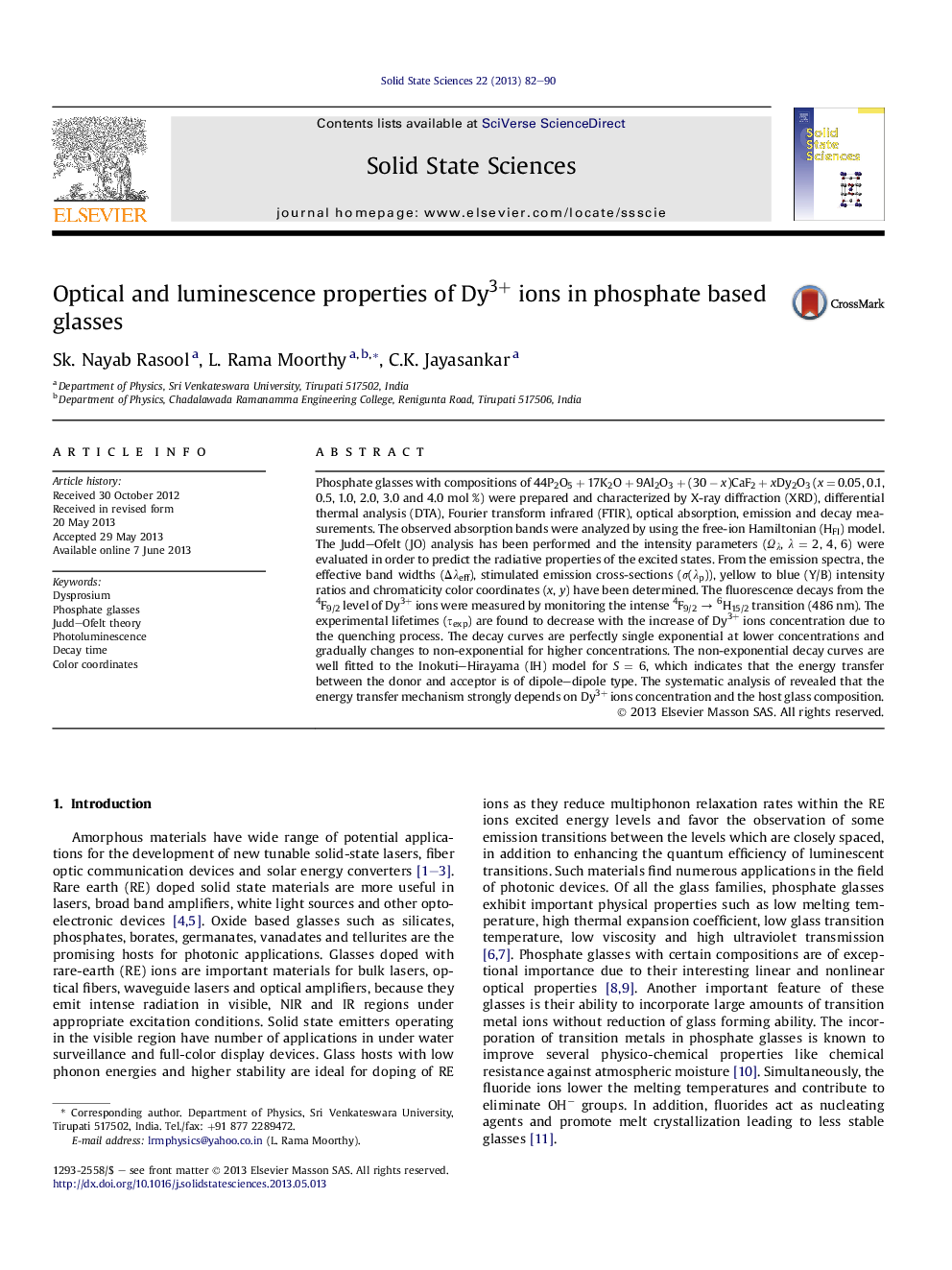| Article ID | Journal | Published Year | Pages | File Type |
|---|---|---|---|---|
| 1504673 | Solid State Sciences | 2013 | 9 Pages |
•Dy3+-doped phosphate glasses were prepared by melt quenching method.•XRD, DTA analysis were carried out to know glassy nature and thermal properties.•Stimulated emission cross-section is higher for 4F9/2 → 6H13/2 transition of Dy3+ ion.•PKAlCaFDy glasses are useful to development of solid state lasers and w-LEDs.
Phosphate glasses with compositions of 44P2O5 + 17K2O + 9Al2O3 + (30 − x)CaF2 + xDy2O3 (x = 0.05, 0.1, 0.5, 1.0, 2.0, 3.0 and 4.0 mol %) were prepared and characterized by X-ray diffraction (XRD), differential thermal analysis (DTA), Fourier transform infrared (FTIR), optical absorption, emission and decay measurements. The observed absorption bands were analyzed by using the free-ion Hamiltonian (HFI) model. The Judd–Ofelt (JO) analysis has been performed and the intensity parameters (Ωλ, λ = 2, 4, 6) were evaluated in order to predict the radiative properties of the excited states. From the emission spectra, the effective band widths (Δλeff), stimulated emission cross-sections (σ(λp)), yellow to blue (Y/B) intensity ratios and chromaticity color coordinates (x, y) have been determined. The fluorescence decays from the 4F9/2 level of Dy3+ ions were measured by monitoring the intense 4F9/2 → 6H15/2 transition (486 nm). The experimental lifetimes (τexp) are found to decrease with the increase of Dy3+ ions concentration due to the quenching process. The decay curves are perfectly single exponential at lower concentrations and gradually changes to non-exponential for higher concentrations. The non-exponential decay curves are well fitted to the Inokuti–Hirayama (IH) model for S = 6, which indicates that the energy transfer between the donor and acceptor is of dipole–dipole type. The systematic analysis of revealed that the energy transfer mechanism strongly depends on Dy3+ ions concentration and the host glass composition.
Graphical abstractFigure optionsDownload full-size imageDownload as PowerPoint slide
